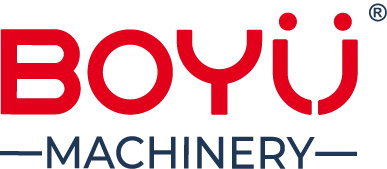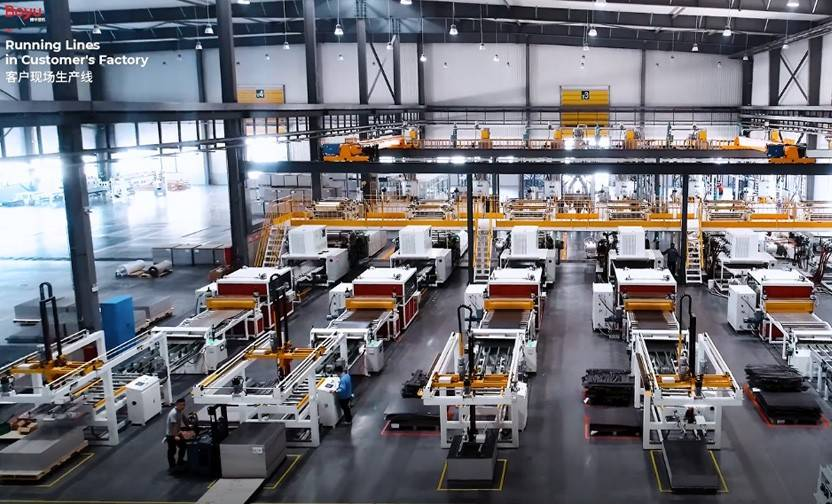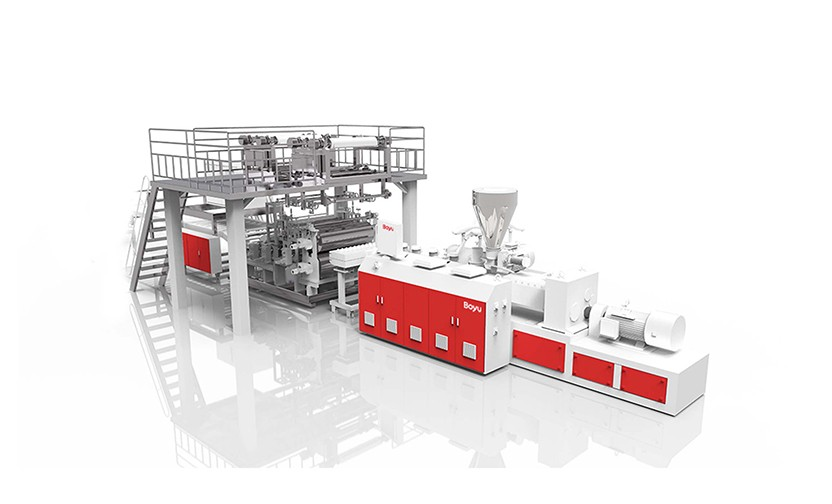As the heart of the plastic extrusion process, the screw plays a critical role in transforming raw plastic pellets into a uniform melt ready for shaping. At Boyu, with years of experience in designing and manufacturing precision extruder components, we understand the nuances of plastic extruder screws and how they impact overall performance. This guide delves into the fundamentals, different designs, common issues, and essential maintenance for these vital parts.
The Core of the Process – What is a Plastic Extruder Screw?
Simply put, a plastic extruder screw is a helical screw mechanism housed within a heated barrel. Its primary function is to receive plastic raw material (typically in pellet, powder, or flake form) from the hopper, convey it along the barrel, heat, melt, mix, and pressurize it, and finally deliver a homogeneous melt through a die. This seemingly simple mechanical component is, in fact, a precisely engineered tool whose design critically influences the quality, consistency, and output rate of the final plastic product.
Understanding the Different Zones of an Extruder Screw
An extruder screw is typically divided into distinct zones, each performing specific functions crucial to the plasticizing process. Understanding these zones is key to comprehending screw performance.
Raw Material Zone: This zone mixes the raw materials and pre-process them, and remove water vapor to meet the production requirements.
Feeding Zone: Located at the rear of the screw, beneath the hopper. Its main role is to receive the raw material and convey it forward into the barrel. The flights in this zone are typically deep to accommodate the bulk density of the solid material and allow for initial compaction. The objective here is efficient material intake and transport without premature melting.
Extrusion Zone: After the material is plasticized, it is extruded in this zone by strong back pressure.
Compression (Transition) Zone: Following the extrusion zone, this section is where the channel depth gradually decreases. This reduction in volume compacts the polymer, increases pressure, and generates significant frictional heat, initiating and completing the melting process. It's a critical zone for converting solid plastic into a viscous melt.
Cooling Zone: The final zone before the melt exits the screw tip and enters the die or downstream equipment. This zone has a shallow, constant channel depth. Its purpose is to homogenize the melt further, ensure uniform temperature and composition, and build sufficient pressure to push the material through the die at a consistent, stable rate. It acts as a melt pump, smoothing out variations from the previous zones.
Beyond these standard zones, some screws incorporate optional features like:
Barrier Screws: These feature a secondary flight that separates the solid bed from the melt pool, allowing solids to melt more efficiently and preventing unmelted particles from reaching the metering zone.
Vents: Some extruders have vented barrels to remove moisture or volatile gases from the melt. Screws for these machines have a decompression zone (where channel depth increases) before the vent to allow gases to escape, followed by a recompression zone.
How Different Screw Designs Affect Extrusion Performance
The specific geometry of an extruder screw ¨C its diameter, length-to-diameter ratio (L/D), channel depth profile, flight design, and the presence of mixing elements ¨C profoundly impacts the extruder's performance characteristics.
A fundamental distinction in screw design is between single-screw extruder and twin-screw extruder designs.
Single-screw Extruders: These are widely used for their simplicity, robustness, and versatility. The single screw rotates within the barrel, primarily relying on drag flow and conductive/convective heat transfer from the barrel to melt and convey the polymer. They are excellent for straightforward melting, conveying, and pumping of many polymers, especially those that do not require intensive mixing or compounding. The screw design (L/D ratio, compression ratio) is tailored to the specific polymer and desired output.
Twin-screw Extruders: Featuring two intermeshing screws rotating within the barrel, twin-screw extruders offer significantly more complex material processing capabilities. The intermeshing action provides positive conveyance and generates high shear forces, making them ideal for compounding, mixing additives, devolatilization, and processing temperature-sensitive polymers or those requiring high dispersion. Twin-screw extruder designs vary widely (co-rotating vs. counter-rotating, parallel vs. conical) to suit different applications. Co-rotating intermeshing twin-screws are particularly effective for intensive mixing and compounding.
The geometric matching of extruder screws and barrels is paramount. The clearance between the screw flight lands and the barrel bore is a critical tolerance.
Proper matching ensures efficient conveyance and melting, maintains pressure, and minimizes backflow (leakage over the flights), which reduces output and efficiency.
Poor matching, often due to wear, leads to increased clearance, causing significant backflow, reduced output, poor melting, inconsistent pressure, and increased energy consumption. The flight profile must also complement any grooves or liners present in the barrel.
Common Problems and Troubleshooting Tips
Even with well-designed screws, operational issues can arise. Here are some common problems related to the extruder screw and initial troubleshooting steps:
Problem: Poor melting or inconsistent output
Checks/Causes:
Worn screws/barrels: Excessive clearance reduces conveying and compression efficiency, leading to unmelted particles or surging output. Inspect for wear.
Incorrect temperature settings: Barrel temperatures too low will impede melting. Verify temperature profiles.
Screw design mismatch: The screw geometry might not be suitable for the specific polymer or required throughput.
Feed issues: Inconsistent feeding from the hopper can cause surging.
Problem: Material degradation or burn marks
Checks/Causes:
Overheating: Barrel temperature or melt temperature too high. Reduce temperatures.
Excessive shear: Screw speed too high for the polymer viscosity, generating excessive frictional heat. Reduce screw speed.
Hang-up points: Material accumulating in dead spots (due to poor design or wear) and degrading. This could indicate a need for cleaning or inspection for wear.
Contamination: Foreign material causing localized overheating.
Problem: Pressure fluctuations or unstable flow
Checks/Causes:
Feed inconsistency: Irregular material supply to the screw. Check the hopper and feeding system.
Blockage: Partial or full blockage in the screw channels, screen changer, or die. Requires careful inspection and cleaning.
Screw wear: Reduced metering zone efficiency due to wear leads to poor pumping consistency. Inspect the screw and barrel for wear.
Temperature variations: Unstable barrel heating can affect melt viscosity and pressure.
Read More about Plastic Extrusion Defects and Solutions
Maintaining and Inspecting Extruder Screws
Proactive maintenance is key to maximizing the lifespan and performance of your extruder screws.
Regular Inspection Intervals: Visual inspections should be part of routine shutdowns. A more thorough inspection should be scheduled based on the material processed and operating hours (e.g., every few months or annually).
Cleaning Procedures: Proper cleaning during material changes or shutdowns prevents material degradation and carbon build-up. Purging with a suitable purging compound while hot is common. For deep cleaning, the screw often needs to be removed after cooling down completely and cleaned using brass tools or specialized cleaning equipment to avoid damaging the surface.
Signs It's Time to Regrind or Replace:
Significant reduction in output at the same screw speed and temperature profile.
Increased melt temperature without changing barrel temperatures.
Poor melt quality (gels, unmelted particles).
Visible wear exceeding the manufacturer's specified tolerances on flight lands or channel depth.
Increased energy consumption to achieve the same output. If wear is within limits, a professional regrind might restore performance. Beyond certain wear limits, replacement is necessary.
Importance of Using Compatible Materials and Avoiding Contamination: Processing abrasive or corrosive materials requires screws and barrels made from appropriate wear and corrosion-resistant alloys. Introducing contaminants (metal, thermoset plastics, dirt) is a major cause of premature screw and barrel wear and must be strictly avoided.
Boyu's Expertise in Extruder Screw Design and Customization
Investing in high-quality, correctly designed, and well-maintained plastic extruders is investing in the productivity and profitability of your plastic extrusion operation. At Boyu, we leverage extensive experience and engineering expertise to design and manufacture high-quality plastic extruder with well-functioning screws and barrels. Whether you need a standard replacement or a complex, application-specific screw for a twin-screw extruder or single-screw machine, Boyu is equipped to provide components optimized for performance, longevity, and efficiency.



